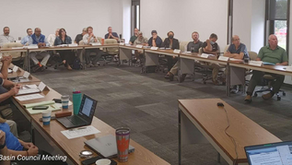What Are the New Asset Management Challenges Over the Next 5 Years?
- JD Solomon
- Sep 10, 2024
- 4 min read

The US and world economies are in flux. Uncertainties abound. That’s why it’s hard to predict what will happen in asset management and long-term investments over the next few years. However, making predictions in the face of uncertainty is what every business and aspiring young asset management professional must do to be successful. So, what are the new asset management challenges over the next five years?
Previous Asset Management Predictions
These were my Top 5 from 2019.
Growing Focus on Big Data and Data Trending
Equipment Doesn’t Last as Long
There’s A Skilled Labor Shortage Out There!
Just-In-Time Spares and Contracted Maintenance
The People Side Will Struggle
I did a detailed review of these predictions back in June.
The Crux of the Asset Management Problem
I recently participated in an Upkeep Ambassador program podcast on all things maintenance and reliability with Bryan Bieschke, George Williams, Bob Latino, JD Solomon, and Chris Pepin. The consensus continues to be that senior management tends to make long-term decisions based on short-term thinking. After all, most private corporation managers live on 3-to-5-year paybacks and rotate jobs on the same frequency. It's not much better on the public side, where elected officials serve terms of 2 to 4 years.
The Same Old, Same Old
Some asset management topics will not disappear. I have identified these three as ones that could appear in this list, the next list, and probably the list after that. There is nothing new here, but these are not going away, either.
A. Aging Infrastructure and Maintenance
Many facilities and infrastructure systems are aging and require significant maintenance or replacement. Prioritizing these needs while managing limited budgets and minimizing service disruptions will be a key challenge.
B. Regulatory Compliance and Risk Management
The regulatory landscape is continually evolving, with new standards and requirements emerging. Ensuring compliance with these regulations while managing safety, security, and operational continuity risks will be essential.
C. Workforce Turnover
If most people work 30 years and retire, 33 percent of your workforce retires every 10 years. If most people work in the same role for 3 to 5 years, then there is a high chance that your workforce will look much different today than it will five years from now. It's reality. Accept it.
The Top 5 Upcoming Challenges
Here are five significant challenges that asset management of facilities and infrastructure will likely face over the next five years.
Software and Technology Integration
Advanced software solutions will become bigger and bigger for facility and infrastructure managers. The associated functionalities include asset tracking, runtimes, maintenance scheduling, quality, and performance monitoring. Add a continued focus on equipment sensors and smart buildings. Don’t look for this topic to incrementally increase over the next 5 years as much as it will be ever-present and continue to consume budgets.
Artificial Intelligence, Generative and Predictive
Those not in the game will spend the next five years entering it. It will be expensive. With that said, look for AI to run its course over that time period and settle into normal business life (much like fax or email). Generative AI will become part of our software tools where it makes sense. Most organizations will conclude that predictive AI is really machine learning and whether you have a better way of doing the statistics and business rules.
Sustainability and Environmental Impact
Facilities and infrastructure will adopt greener practices, driven largely from the disconnected upper floors of the organization. Look for the gulf to widen between the perception of needed green practices versus those that actually work (pay for themselves). Asset managers will continue to fill the gap with their perspective and expertise.
Remote Work and Flexible Schedules
This aspect of workforce turnover is more than the same old, same old. How organizations deal with their field staff versus office workers will drive asset management success. It includes not only how vacation is accounted for but also things like physical and cyber security. If you think we are over it three years after COVID, think again.
Intergenerational Communication
There are five generations in the workforce, which will continue as we keep and expand our pool of older, skilled workers. The communication challenge for asset management is more than just the words we use–it's how we think, consume information, and interpret decisions. This is more than the traditional way of thinking about asset management communication in terms of being able to express value. This type of communication requires investment, training, and policy changes just to maintain a viable asset management program.
New Asset Management Challenges over the Next 5 Years
I love making these five-year asset management predictions, and I probably love the post-prediction reviews even more. Why five years? Because that matches your business plan. Remember, put your money (and your business) where your mouth is.
JD Solomon Inc. provides solutions for program development, asset management, and facilitation at the nexus of facilities, infrastructure, and the environment. Sign up for monthly updates related to our firm.
JD Solomon is the founder of JD Solomon, Inc., the creator of the FINESSE fishbone diagram®, and the co-creator of the SOAP criticality method©. He is the author of Communicating Reliability, Risk & Resiliency to Decision Makers: How to Get Your Boss’s Boss to Understand and Facilitating with FINESSE: A Guide to Successful Business Solutions.




Коментарі